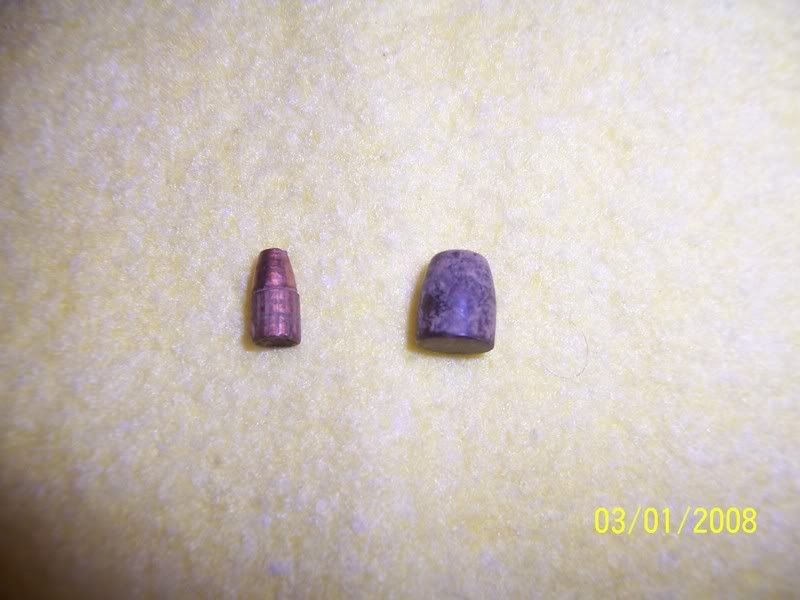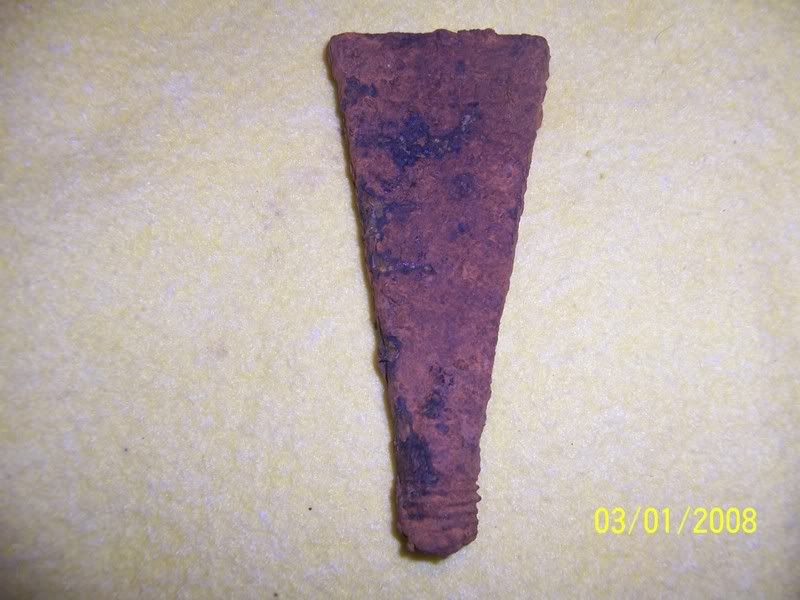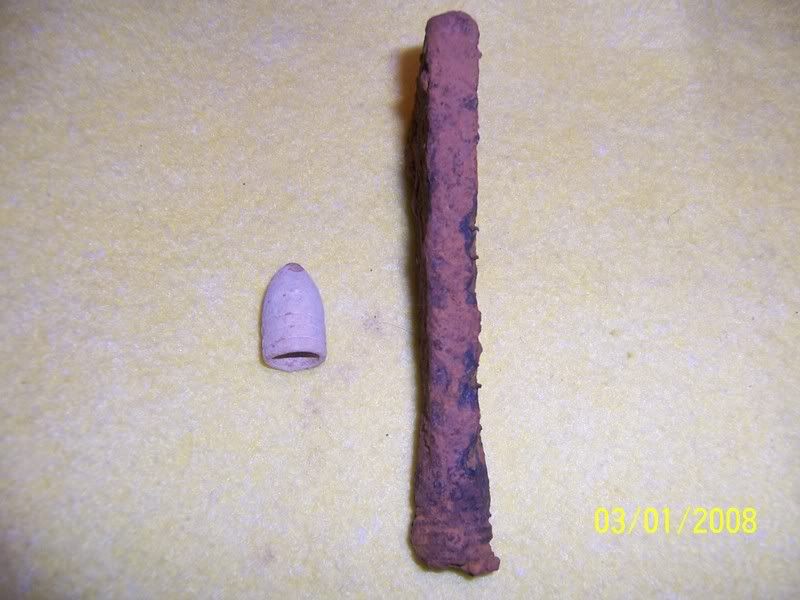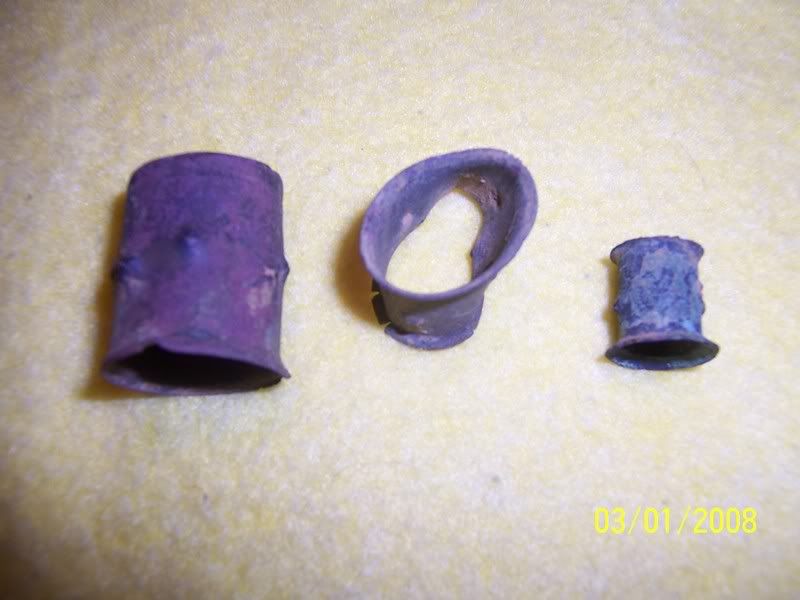Nimrod777 said:
I just scrubbed the stuff down w/ water and a toothbrush. Those bullets... they just called mini-balls? What kind of gun were they being shot out of? I'm woefully behind on the history end of things.
I'm ready to go track down the neighbors now! lol
Common Guns in the Civil War
577 Enfield Musket
The .577 British rifle musket made at their armory at Enfield Lock fired the same Minie ball and paper cartridge ammunition as the U.S. .58 Springfield rifle musket. The British Enfield was popular with many soldiers during the Civil War. The Enfield and Springfield muskets were nearly the same identical length, weight, and used the same kind of bayonet.
The mass conscript armies of both sides in the American Civil War overwhelmed the ability to make enough guns. Particularly during the first years of the Civil War, many foreign muskets were imported, by both sides. Sometimes the North bought them up to keep the South from getting them.
The Enfield musket was first produced in 1853 at the Royal Small Arms Factory located on an island in the Lee River, drawing the name from Enfield Lock for water transportation. The army munitions factory opened here in 1816 and closed as recently as 1987. The Enfield rifle musket was capable of grouping its shots into a 4 inch circle at 100 yards and could hit a man at 600 yards. The 500 grain bullet could penetrate 4 inches of timber at 1000 yards, probably using pine. The Enfield first saw serious service in the Crimean War and was the British shoulder arm in the Indian Mutiny.
The Enfield had a finely adjustable rear sight. The Springfield rear sight came with two leaves for adjustment to the three ranges of 100, 300, and 500 yards. The Enfield rear sight could be adjusted for any range using a friction cross bar on a standing leaf. In recreational target shooting, my Dad enjoyed make small adjustments in the rear sight of his Enfield. The difference in actual battle was negligible.
http://www.hackman-adams.com/guns/enfield.htm
58 Springfield Musket
The muzzle loading 58 caliber rifled musket was the primary weapon of the American Civil War. An unprecedented production of over a million and a half were made in the North during the Civil War by Springfield Armory and private contractors. The quantity made in the South is unknown, but is estimated as less than one percent of the number made in the North. The primary source for the South was to pick them up on the battlefields after the Union Army withdrew from immediate contact. The opposing armies tried to make agreements to not pick up muskets on the battlefield when retrieving the wounded, but the officers of both sides were too afraid to do much if a soldier of the opposite side picked up a musket when there were still moaning wounded waiting to be carried away.
Both sides were desperate for weapons at the start of the War with many of the earlier smoothbore muskets pressed back into service. The most common import was the Enfield from England. Small quantities of other makes were also brought from Europe.
The 58 rifle musket made a dramatic change in the common soldier's marksmanship. The predecessor US musket was the 69 caliber smoothbore modeled from the French muskets provided during the American Revolutionary War. The 69 smoothbore had a maximum effective range of about 100 yards, or less. With the adoption of the 58 rifle musket, the effective range increased to 300 yards, or more. Up to 600 yards to hit either the man or the horse he was riding.
My father and I with an original Enfield around the year 1960 were able to get such results out to about 250 yards with a swabbed almost clean barrel on a target the size of a single man's torso. And about the same with the use of excess crisco as bullet lubricant. Messy and fun. But the effective range in the Civil War was against a whole firing line packed shoulder to shoulder since they still marched up in mass as they would have for the 69 smoothbore. In deference to the times, the only communication the firing line officers and sergeants had with the soldiers back then once they were in the thick of a fight was trying to yell over the din, which kept everyone all packed in close to each other.
The 58 was based on an invention, again from France, of the hollow base Minie "ball" bullet. The gas pressure from the burning propellant powder would expand the huge hollow base of the bullet into the rifling. Ammunition was issued as paper cartridges containing the powder and bullet. The percussion caps were issued and applied separately.
The increase in potential accuracy was so profound the Government put a rear sight on the standard issue musket for the first time.
The 3 and the 5 on the sight leaves denote the range. The sight is set for 100 yards by default when both sight leaves are down. When the leaf marked three is raised the sight is set for 300 yards. When both leaves are raised, the sight is set for 500 yards. Rough and crude by modern standards, the thinking at the time was simplicity in the ability to hit a standing man at such ranges.
The Confederate President Jefferson Davis was the former US Secretary of War when the Minie Ball shooting 58 rifled musket was adopted in 1855. Manufacture commenced immediately in the Federal Arsenals at Springfield, Massachusetts, and Harpers Ferry, Virginia (now in West Virginia).
They didn't understand the changes in tactics from the spectacular increase in effective range. The artillery had to back up to three times their former distance from the infantry. With the 69 musket, the attacker could march up, both sides fire one volley, and then the attacker could instantly charge with bayonets. On a still day neither side could see the other through the dense clouds of gunsmoke. With the rifle musket and a light breeze to clear the air, the defender could commence firing at 300 yards, or more, and get off several volleys. The Defender quickly found out that hiding behind anything limited the attacker's ability to shoot back. A fence if nothing else. A stone wall was better, or a sunken road. Both sides became expert in instantly erecting barriers or digging a trench. The increased range led to defensive warfare favoring the South in many battles of the Civil War.
The heavy, slow moving bullet wrought frightful damage. The Minie Ball was prone to tumble when it hit. If the thin walls of the hollow base collapsed on impact, it was only a big bone smashing bullet. If the base stayed open when it tumbled, the big hollow base became a hollow point with explosive force.
The hollow base bullet by expanding under pressure helped to clean out the barrel of black powder fouling. But not completely. The typical soldier loading and firing on his own could get about three shots off per minute. With the standard issue of forty paper cartridges, which is about a dozen minutes of sustained shooting.
After the Confederates learned how to load and fire fast, many more shots could be fired per minute per man in the front with several men doing the loading behind him. For this, it helped if the bullets were made undersized so as to go down a badly fouled barrel. The hollow base of the undersized bullet would still expand almost as well to carry away some of the fouling.
The 56 inch long musket (40" long barrel) was about as tall as the average man of the era. With the 18" bayonet installed, the whole thing was considerably taller than the soldier. There were few bayonet charges during the Civil War, but the whole lengthy assembly made a theoretical possibility of unseating a cavalryman before his sword reached down to the infantryman. That is, if the infantryman didn't quall before the terrified horse first. Or get knocked down. Good luck; so much for a theory.
There were effective military power breechloaders available early in the War--the Sharps single shot and the Spencer repeater. But in every major battle, the few regiments armed with a repeater ran out of ammunition at the first encounter. There weren't enough horses, mules, and wagons at the time to carry the additional ammunition consumed by the breechloaders. Battles were fought with each soldier carrying his own ammunition into the fray. Forty shots was the standard issue for about a dozen minutes of sustained fast and furious firing.
By comparison, an experienced sergeant could shoot those forty shots off in 3 to 4 minutes with the Krag-Jorgenson service rifle of the late 1890s, 2 to 3 minutes with a 1903 Springfield, less then two minutes with a 1936 vintage M1 Garand, about the same with the British Lee Enfield of 1905 to 1950, and a minute or so with the M14 and M16. Then what do you do when you're out of ammunition? Carry more ammunition, so the sustained firing times within the limits of the weight of ammunition for the Krag is about 8 minutes, the '03 about six minutes, and the M16 of Vietnam on full auto maybe 2 minutes. So carry even more ammunition, but there is an upper weight limit in practical terms, so for the entire history of the US, full speed shooting with what the soldiers can carry is only about half a dozen to a dozen minutes. The 58 musket was doing rather well by this comparison.
The 58 musket was sturdy and reliable. The biggest cause of it becoming disabled in battle was being loaded a second time when the prior charge had not gone off. Two superimposed loads would burst the barrel with serious damage to the soldier firing it. The two most common causes of the gun not firing was either the percussion cap had fallen off, or in the anxious haste of battle, the soldier forgot to put it on. The embarrassed soldier would throw away such a gun and pick up another. Another soldier could then pick up the discarded musket, and load it again. But then on discovering two or more charges in the barrel when the ramrod wouldn't go all the way down, he would also throw it away, but only after ramming another load of powder and bullet down the barrel.
If the barrel were fired (empty, unloaded), the ramrod would go all the way down the barrel. In the example above, this is a typical length of the ramrod to project out of the muzzle for a single charge of unfired powder and a minie ball bullet. Double the exposed length of rod for two superimposed shots, triple for three, etcetera.
Of the approximately 35,000 muskets picked up from the Gettysburg battlefield, it was discovered:
11,000 were unloaded
24,000 were loaded
6,000 held one charge
12,000 held two charges
6,000 had from three to ten charges each
One had twenty-two charges
http://www.youtube.com/watch?v=kSqih3xSX3M
Immediately after the War when supply was no longer a serious consideration, the Army quickly switched to a breechloading rifle to the very unpleasant surprise of the Indians. The muzzle loader had to go as a military arm.
http://www.hackman-adams.com/guns/58musket.htm
Springfield Model 1842
From Wikipedia, the free encyclopedia
(Redirected from Springfield model 1842)
Jump to: navigation, search
The original U.S. Springfield Model 1842 (a.k.a. U.S. Model 1842 Percussion Musket, M1842 Musket) holds an odd but interesting niche in history. It was the last smoothbore musket, while simultaneously being the first fully parts interchangeable (machine-made) and the first with a regulation percussion lock. It was made, not in �great numbers� as is commonly stated, but rather in fairly modest numbers, at least compared to the other US Springfield models. Total production of both the Springfield and Harpers Ferry Armories was only 272,565 over the course of 12 years. The Springfield Armory by itself made nearly that number of US 1861 rifle-muskets in eighteen months. This total number of 1842s does not even make it the most common smoothbore musket in the Civil War, as it was estimated that over 700,000 US model 1816/22 muskets (both flintlock and converted to percussion) saw action early in the conflict.
It is true that additional M-1842 muskets were made by private contractors. However, these were few in number. Some were made by A.H. Waters and B. Flagg & Co, both of Millbury, Massachusetts, and as you may note, these were distinguished by having brass furniture instead of iron. A.H. Waters went out of business due to a dearth of contracts in New England, and Flagg entered into a partnership with William Glaze of South Carolina. They relocated the machinery to the Palmetto Armory in Columbia, South Carolina. Instead of �V� over �P� over the eagle�s head, these guns were usually stamped �P� over �V� over the palmetto tree. Most of the output of the Palmetto Armory went to the state militia of South Carolina. There were only 6,020 1842 type muskets produced on that contract and none were made there after 1853.
The gun weighed 10 pounds and was 57 1/2 inches long and fired a .69-caliber round ball, or a .69-caliber ball with three buckshot; a cartridge known as 'buck and ball'.
http://en.wikipedia.org/wiki/Springfield_model_1842
http://www.cabelas.com/prod-1/0006436210037a.shtml









